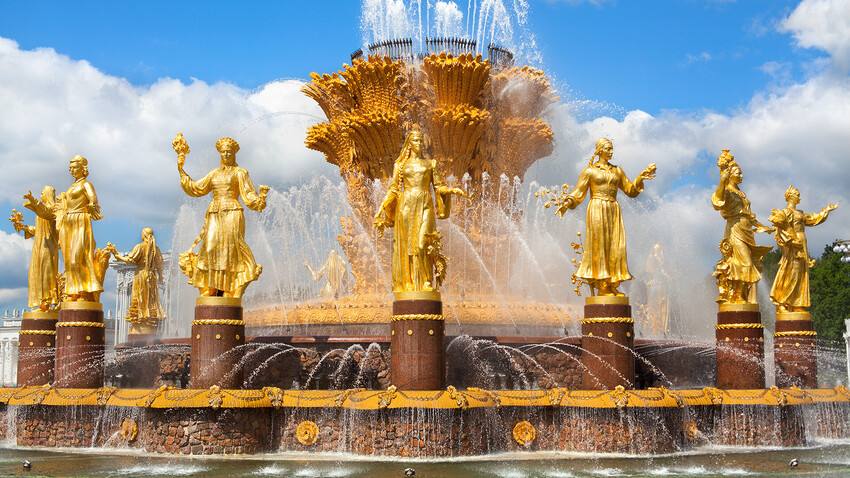
The Friendship of Peoples Fountain is a colossal sculptural complex that was unveiled in 1954 at the VDNKh (Exhibition of National Economic Achievements) in Moscow. Architects Konstantin Topuridze and Grigory Konstantinovsky and a whole team of sculptors worked on it. According to legend, they were inspired by the fountains of the tsar's residence Peterhof just outside St. Petersburg, considered the most luxurious in Russia.
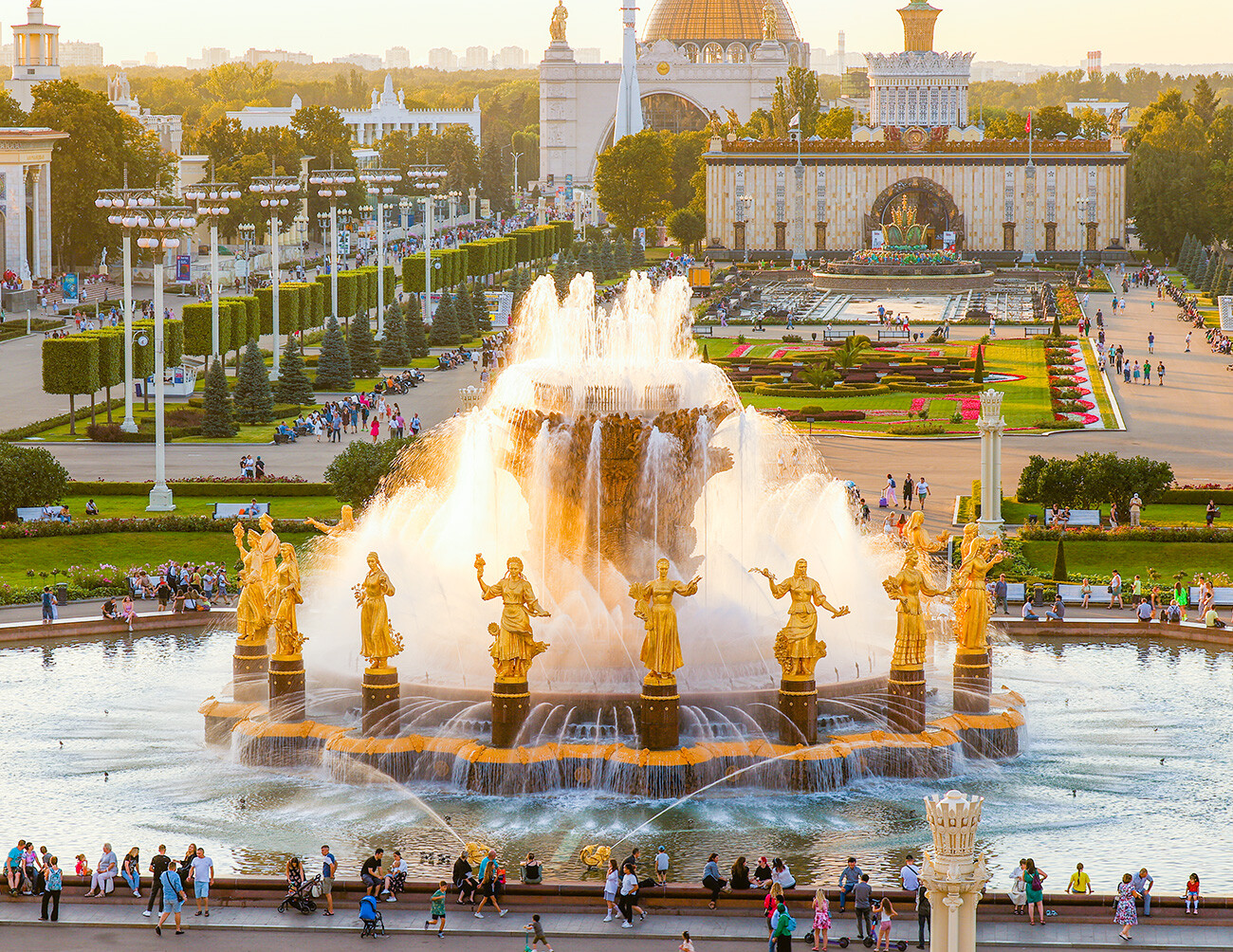
The basis of the composition is a bowl with an area of about 4,000 sq. meters. In the center, we can see a sheaf of ears 7.5 meters tall, symbolizing the wealth of agriculture of the USSR. Its shape resembles the ears from the official Soviet Union coat of arms.
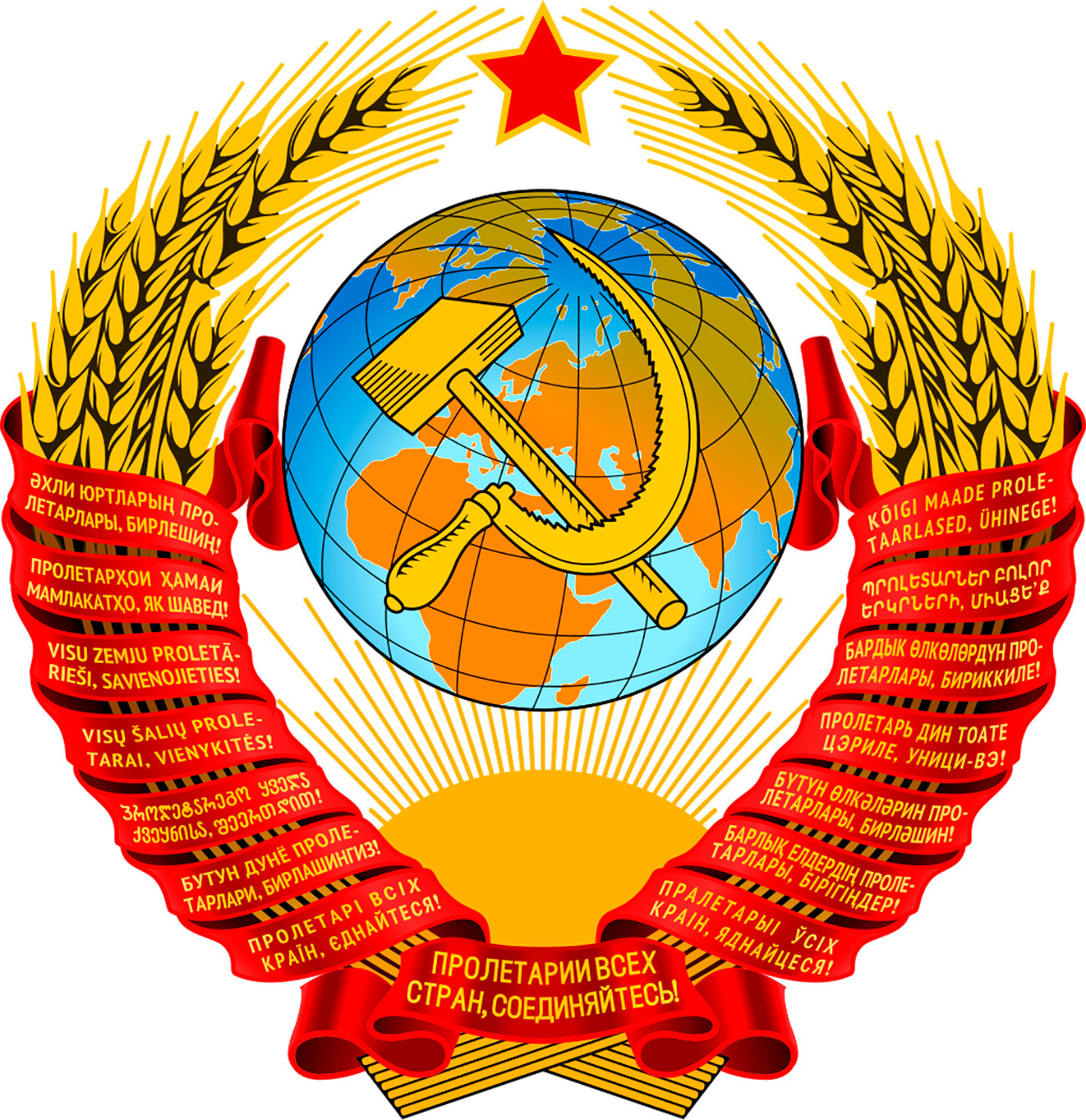
Soviet coat of arms (1956-1991)
Public domainSixteen female figures made of bronze and covered with gold leaf are installed around the bowl. Being four meters high, each of them symbolizes one of the republics of the USSR. The female statues are dressed in the national costumes of each republic and are believed to have facial features that authentically reflect the republics' ethnics.
In 1954, there were 16 republics and, two years later, the Karelian-Finnish Soviet Socialist Republic became a part of the Russian Soviet Federative Socialist Republic. So, the amount of the republic dropped to 15, but authorities decided not to remove the sculpture from the fountain.
The order of the sculptures corresponded to the ribbons that denoted these republics on the coat of arms.
Clockwise:
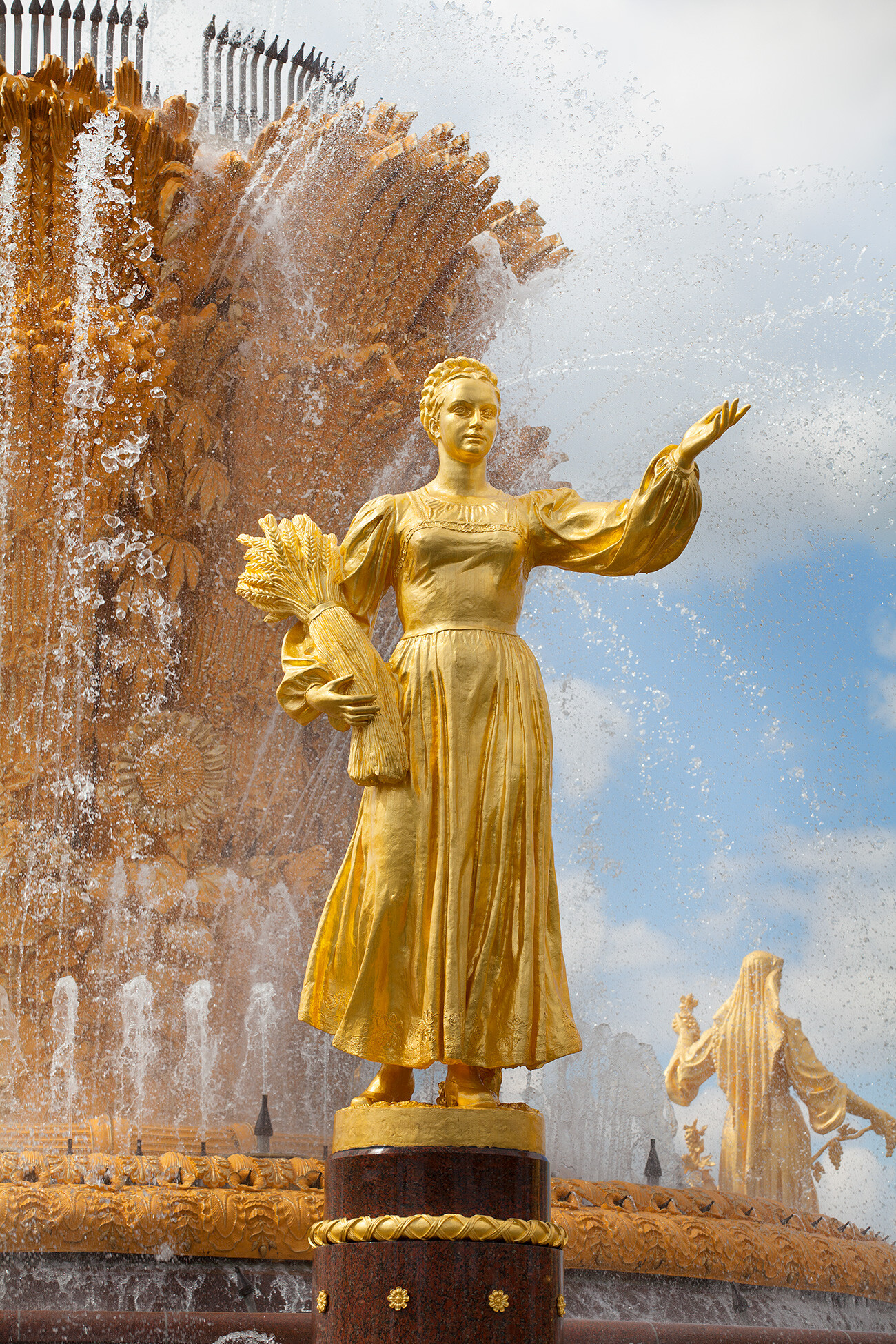
The main sculpture stares back at VDNKh guests as they enter through the central entrance. In her hands is a sheaf of wheat, a symbol of fertility.
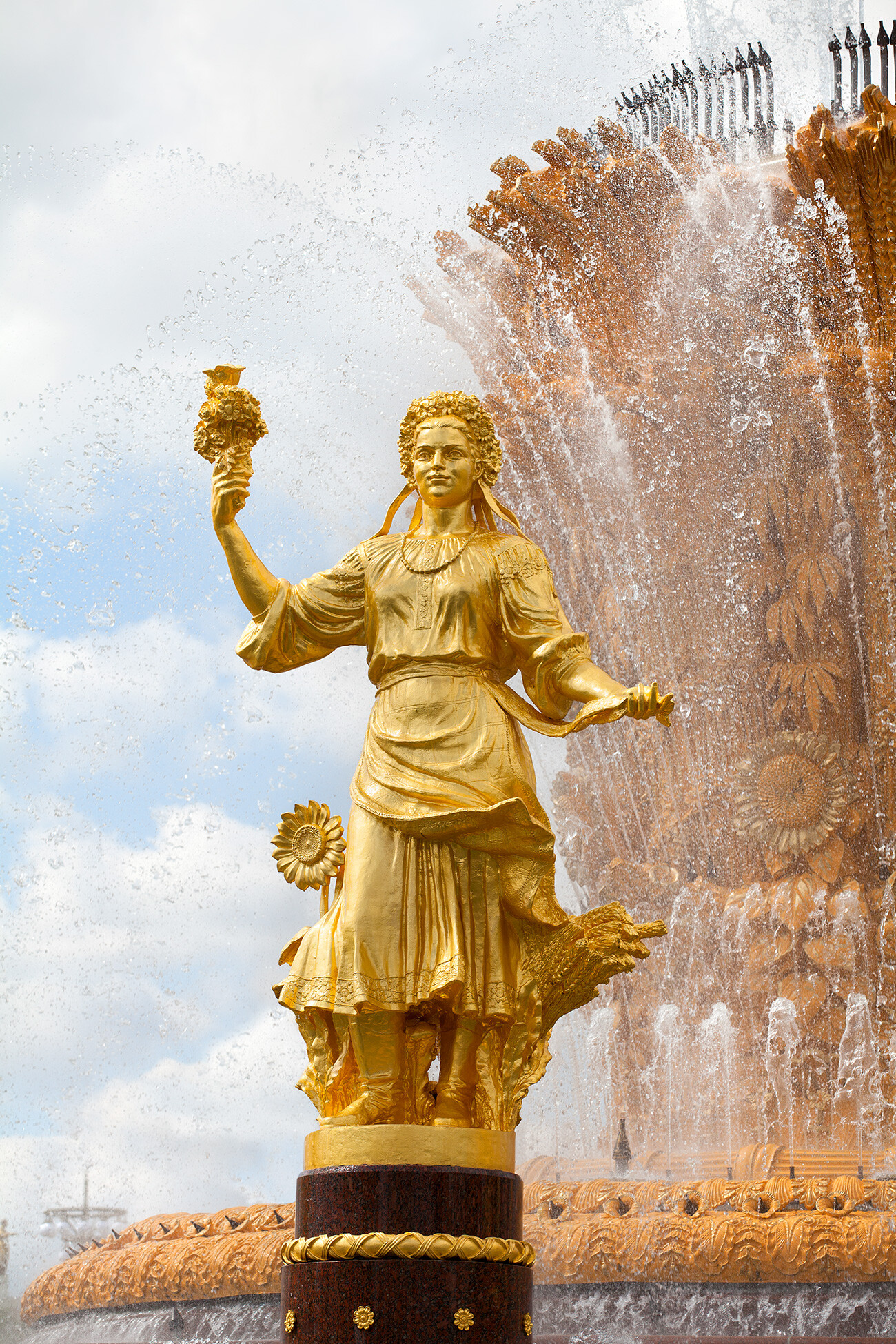
The Ukrainian woman is holding wheat, grapes and a sunflower. And her head is covered with a wreath of flowers.
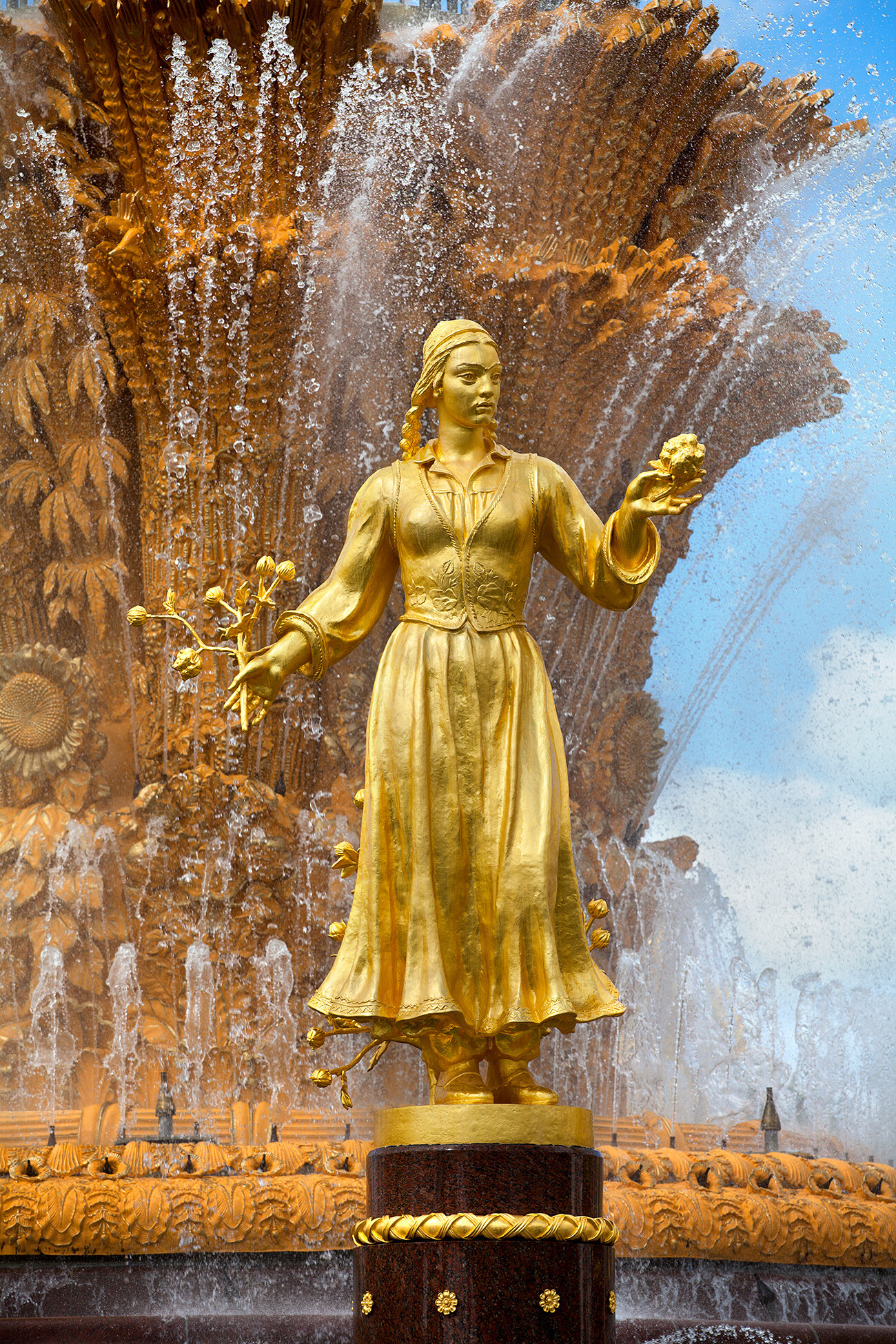
The Uzbek woman is holding cotton flowers, the main product of the republic.
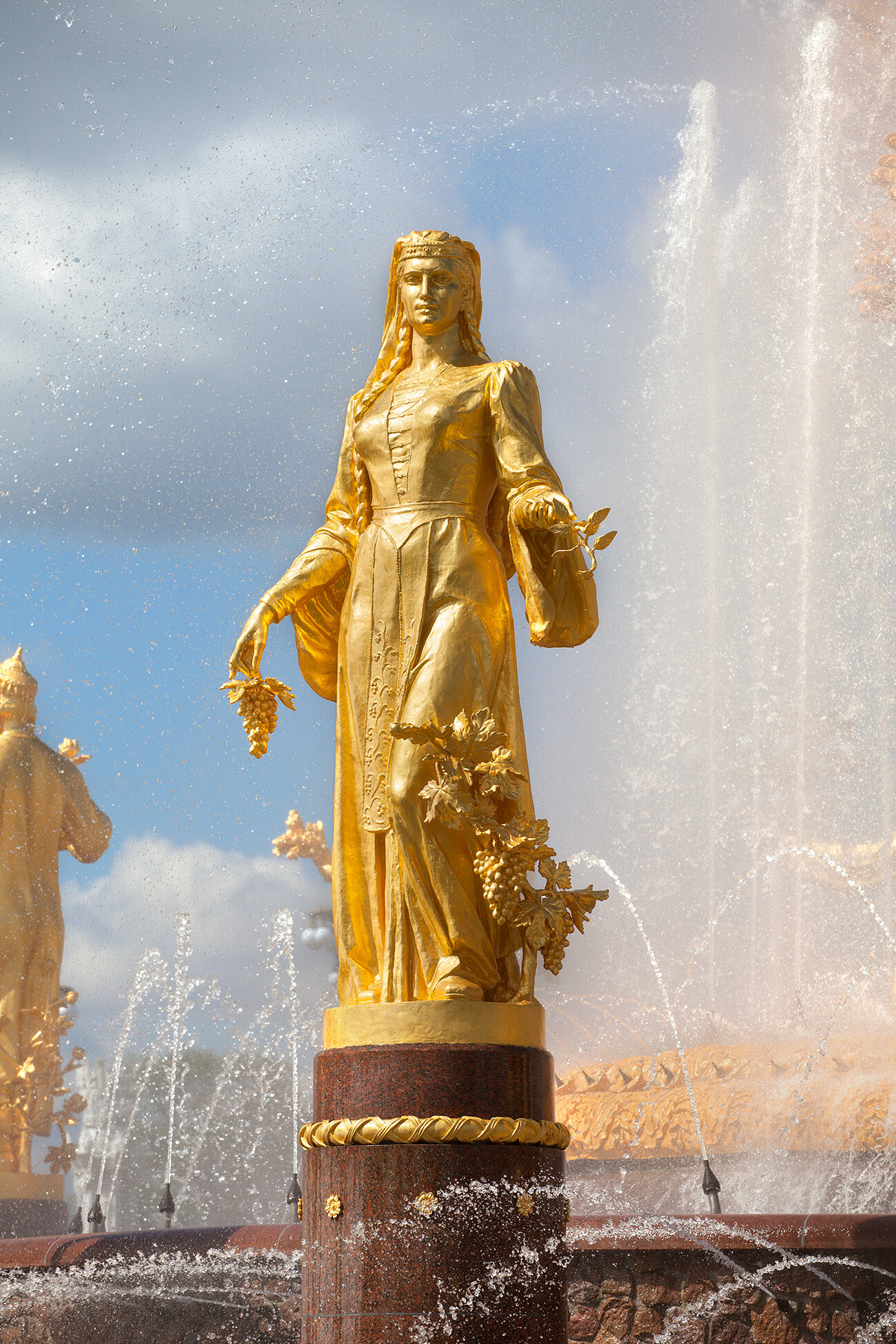
The Georgian woman is holding a bunch of grapes, a kind of a symbol of the famous local wine. By the way, the Georgian princess Rodam Amirejibi, wife of famous Soviet poet Mikhail Svetlov, posed for the sculpture.
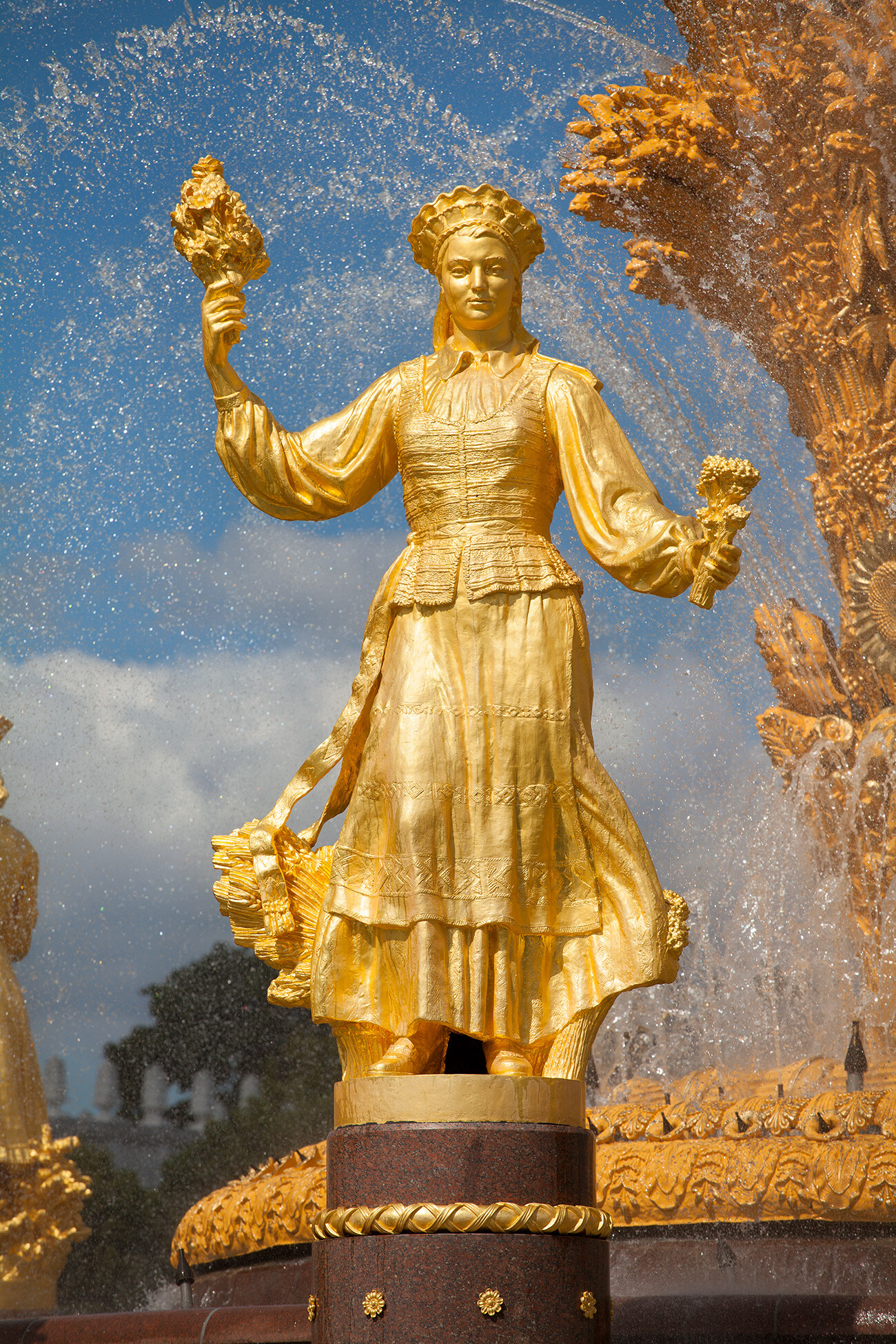
Barley, flax, flowers and oak leaves were chosen as symbols of Lithuania.
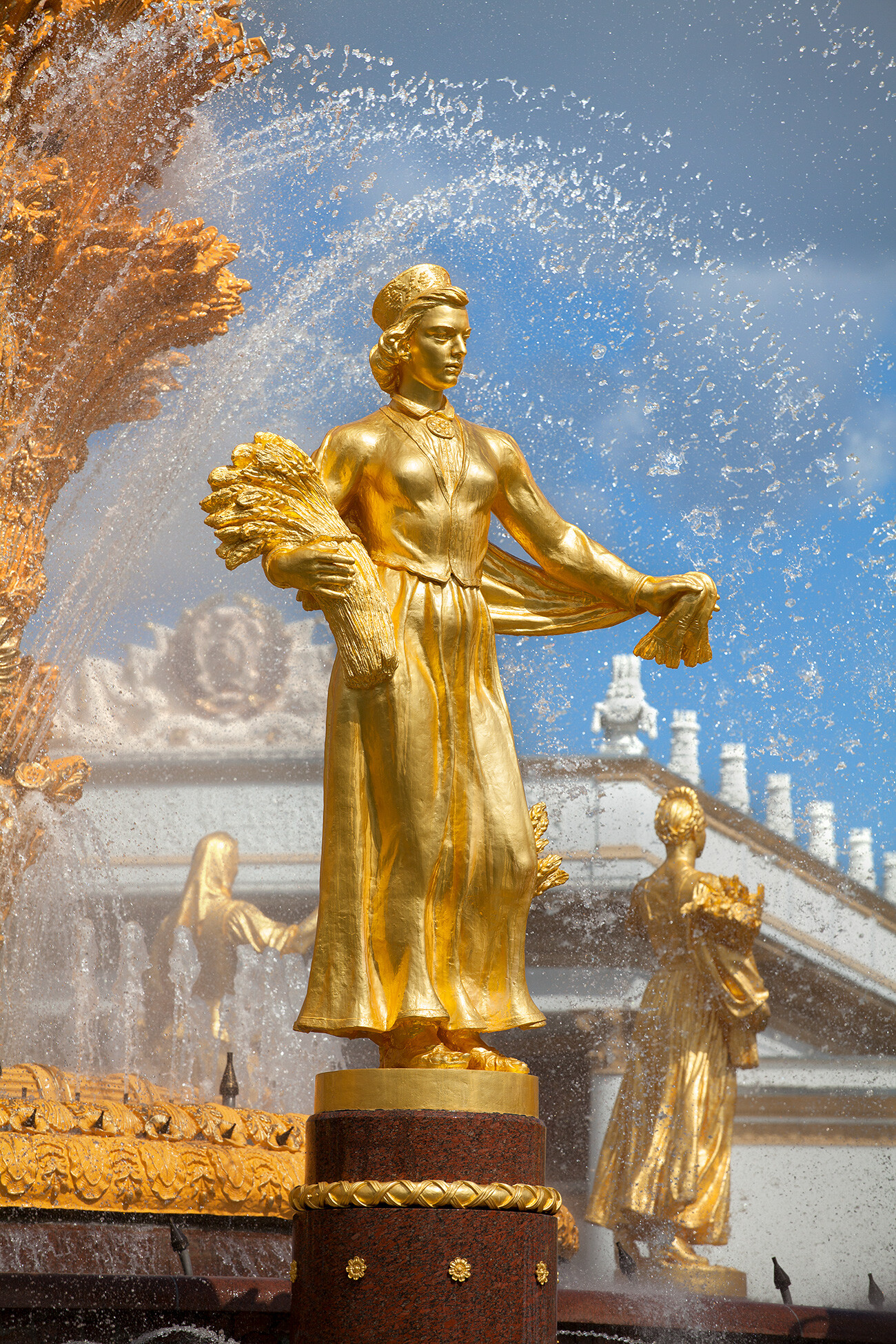
The Latvian woman is holding a bundle of ears.
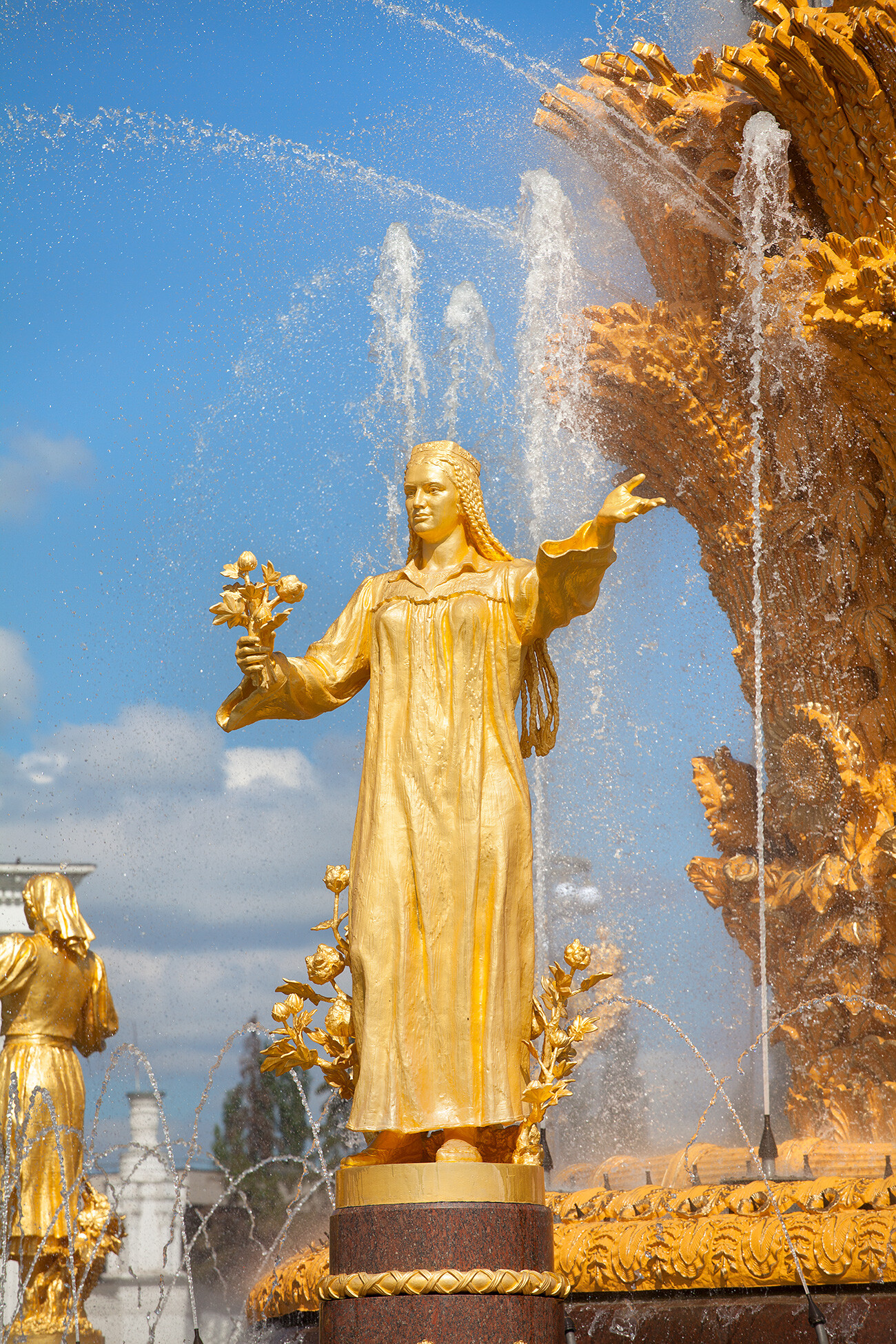
The Tajiks also have cotton as their main crop.
(Read more about the importance of cotton in the USSR here)
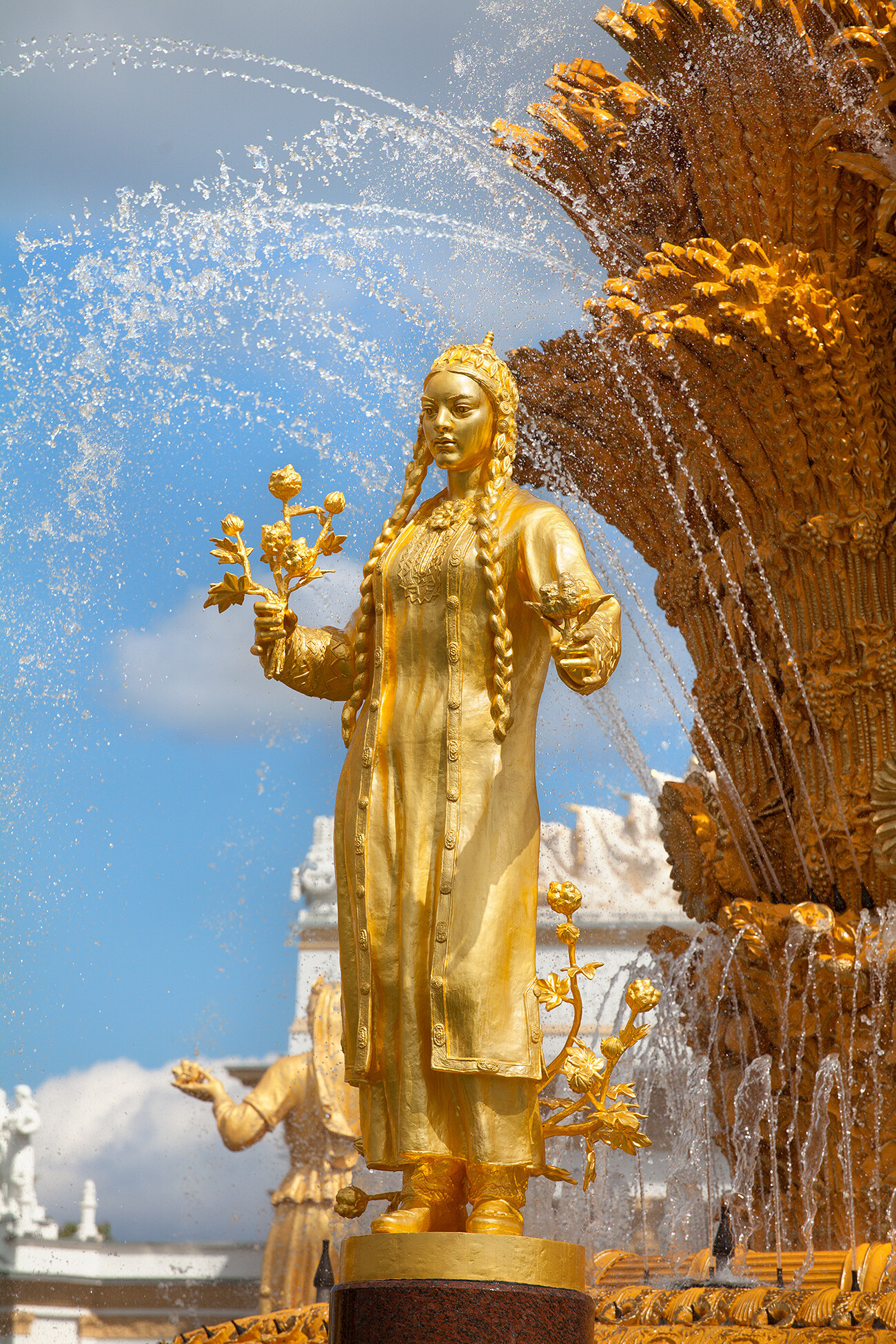
Cotton is also depicted in the hand of pianist Gozel Annamamedova, who posed for this sculpture.
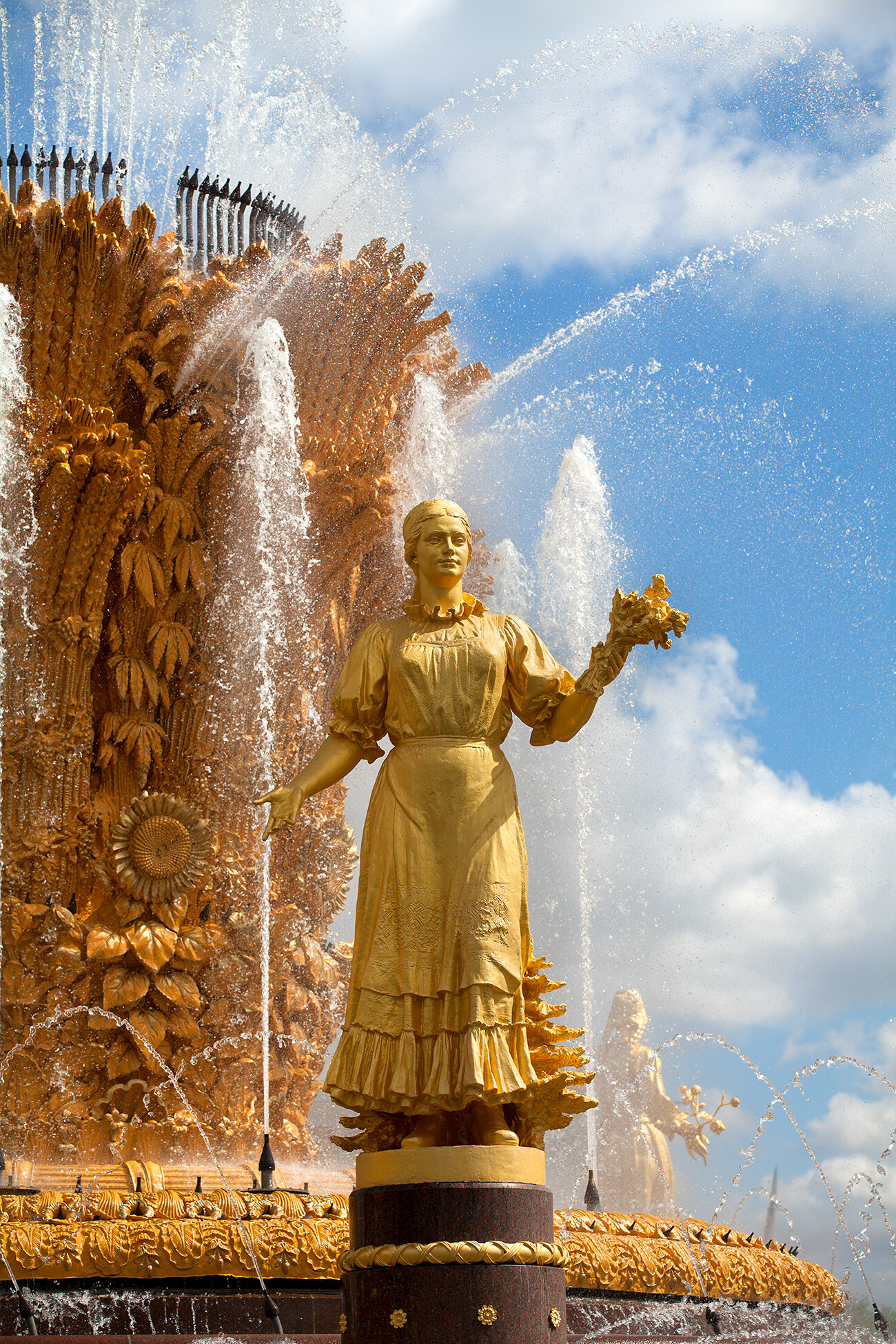
The Karelian woman has flowers in her hands, while a small fir tree is growing at her feet.
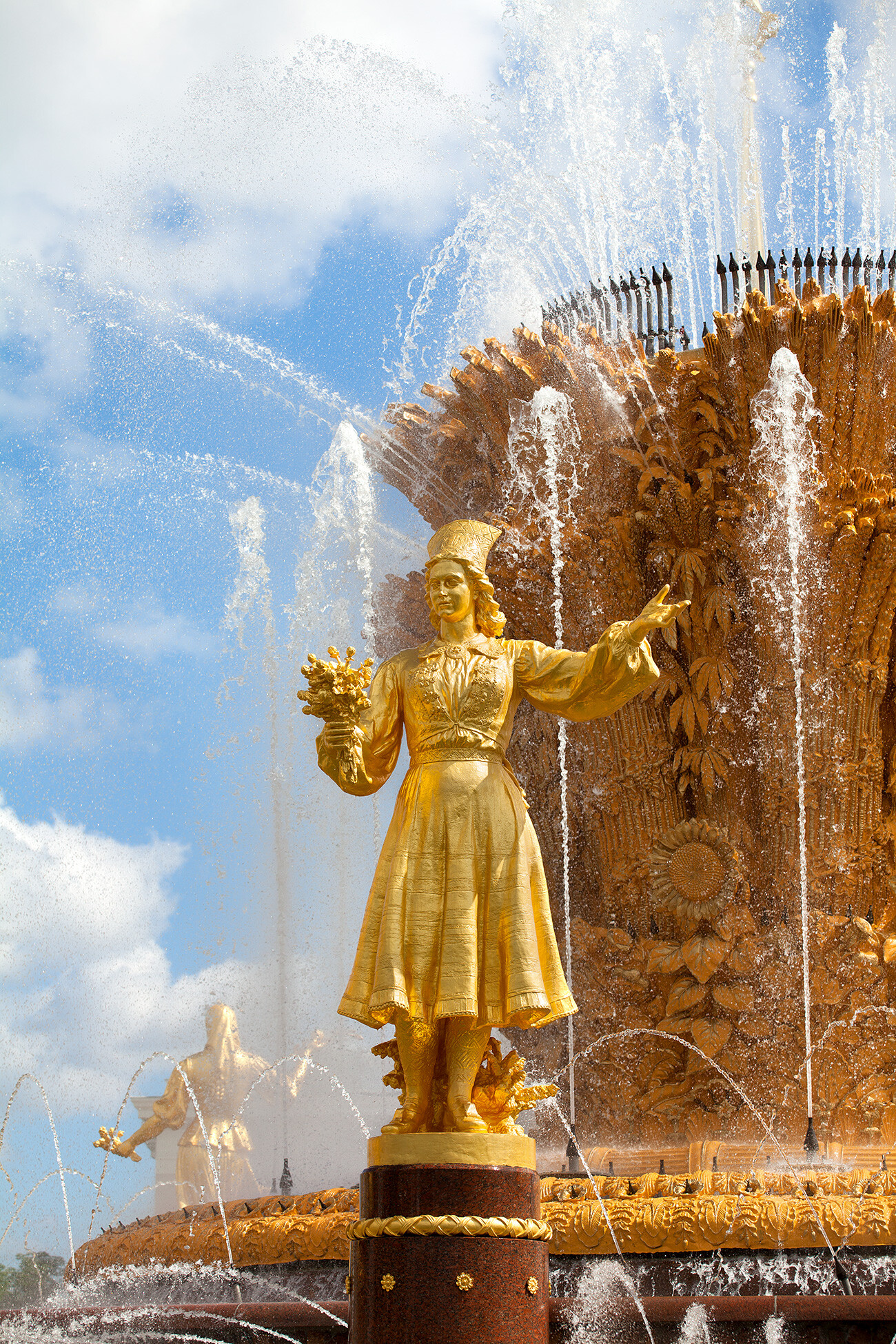
A pine twig and an ear of wheat in the hands of ballerina Virve Kiple-Parsadanian, who posed on behalf of Estonia.
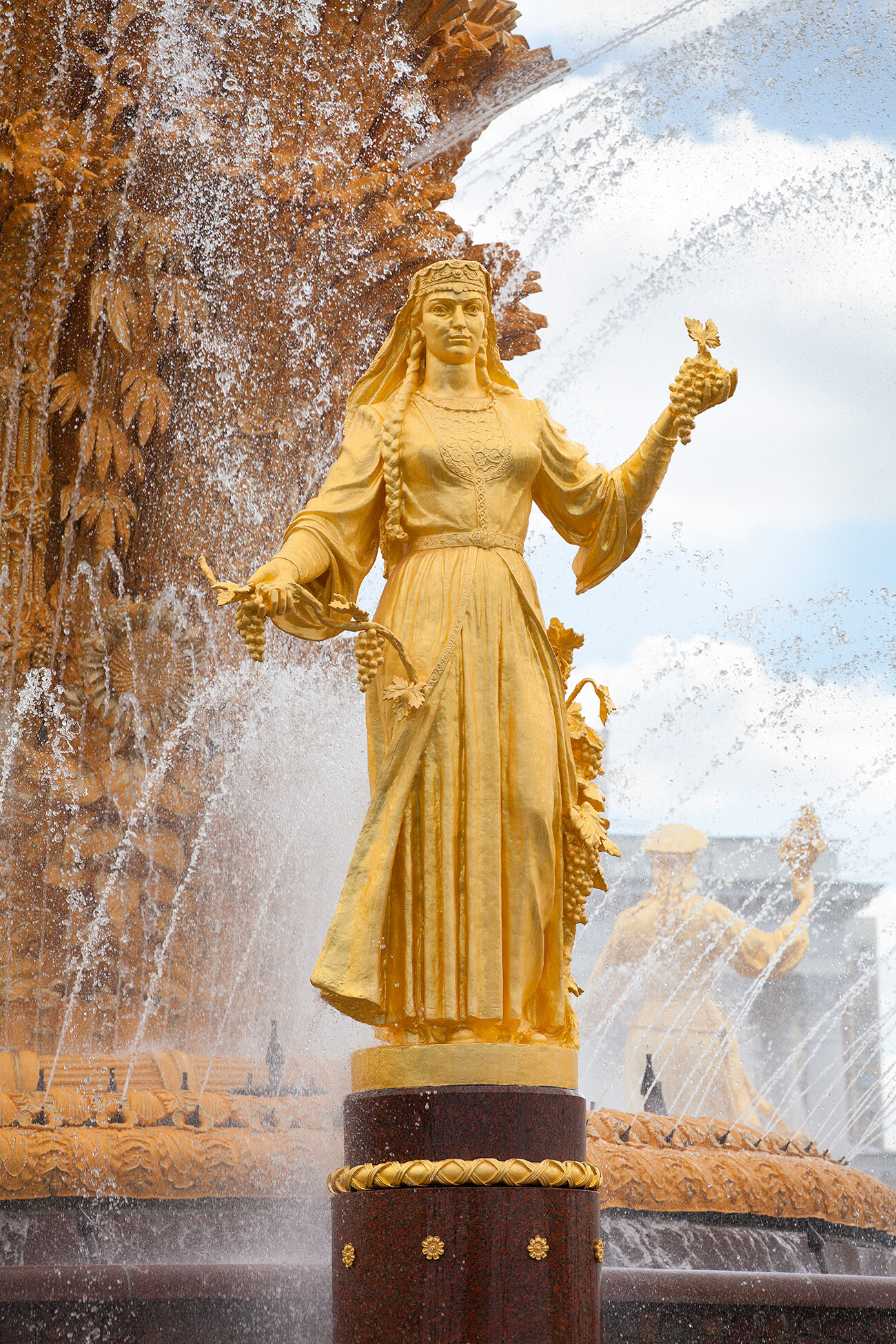
Grapes also symbolize Armenia and its wines and cognacs famous around the whole USSR.
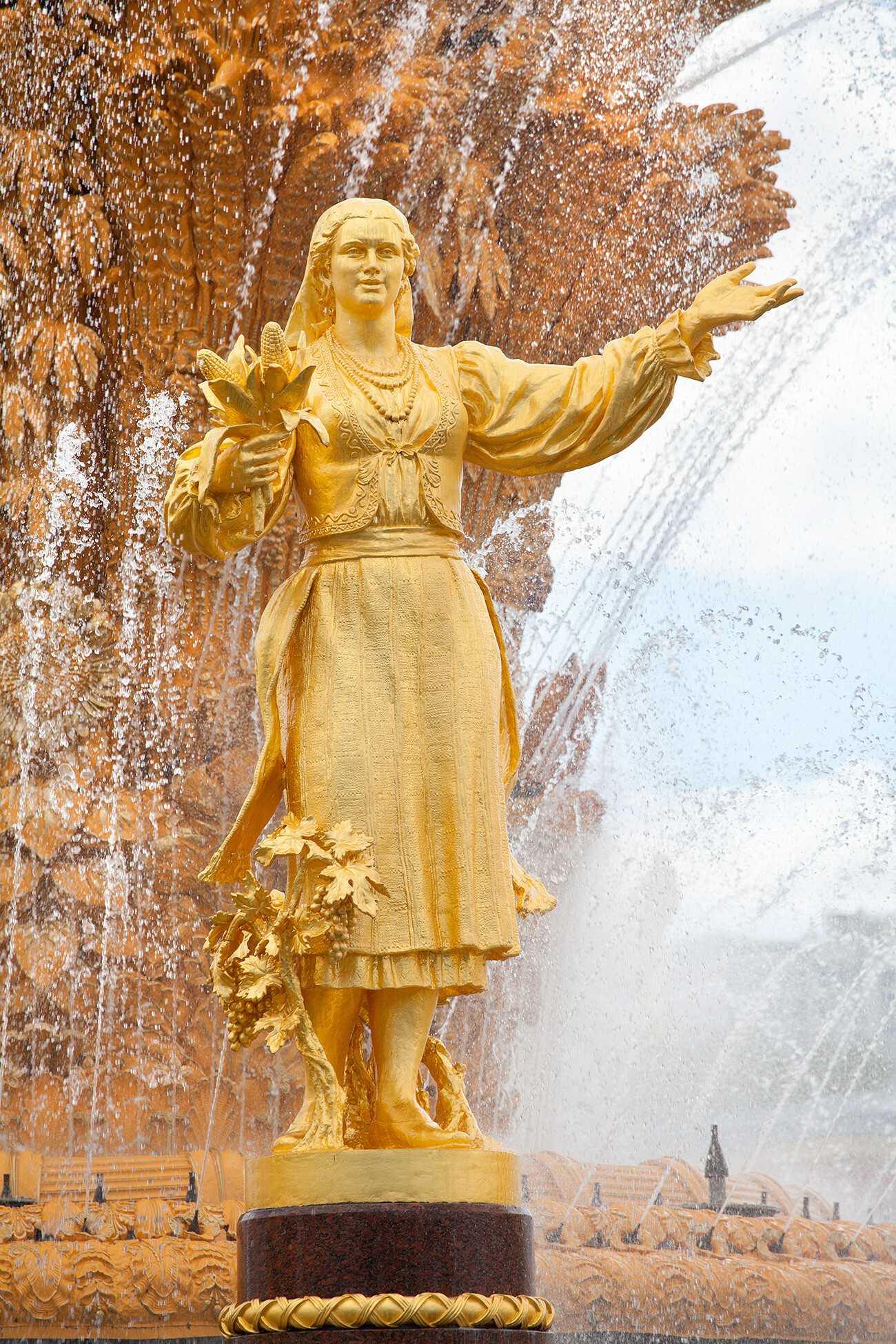
The Moldavian woman is holding corn in her hand and vines and bunches of grapes are depicted under her feet: the republic was also famous for wine.
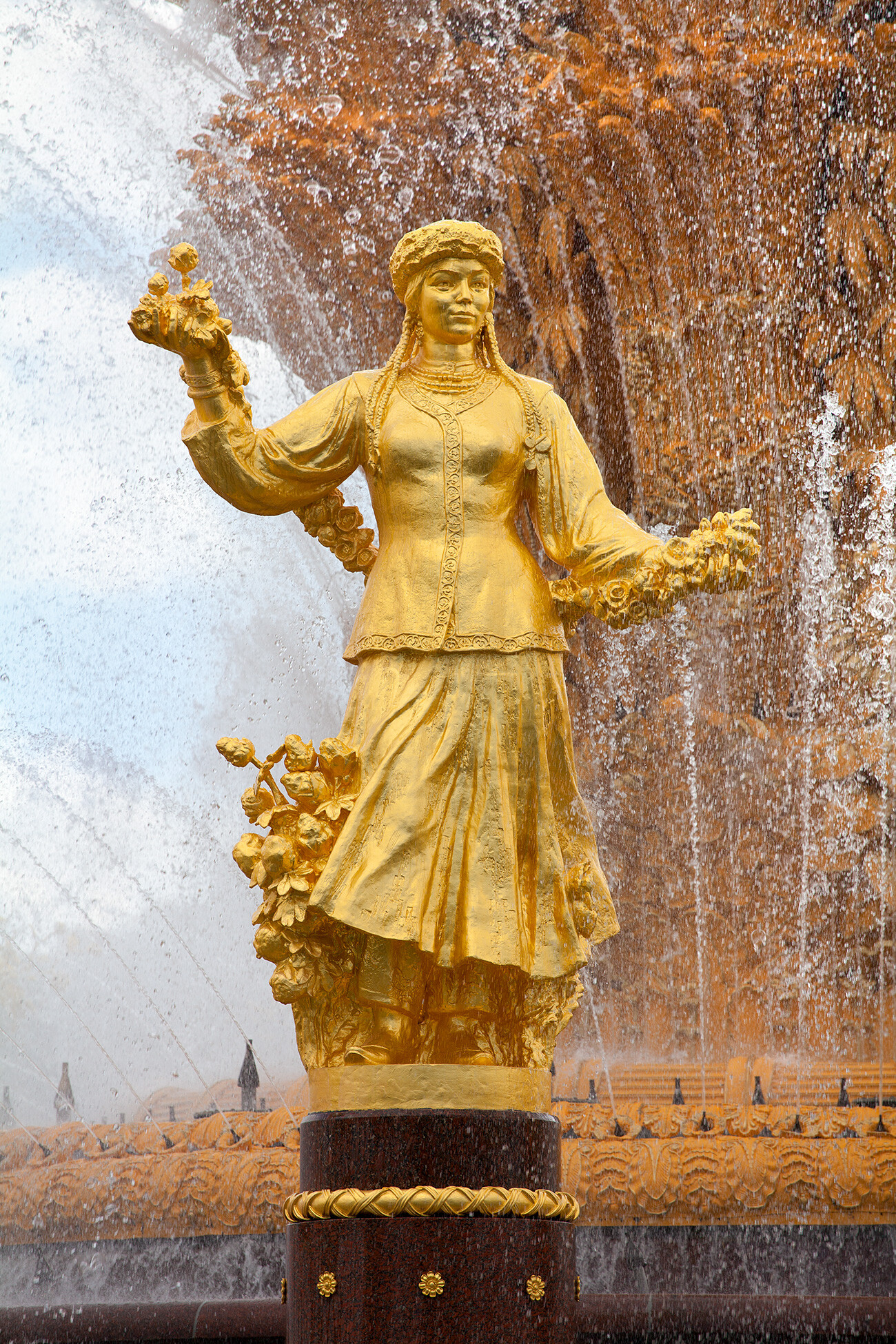
The female statue dedicated to Kyrgyzstan is decorated with a garland of flowers and cotton.
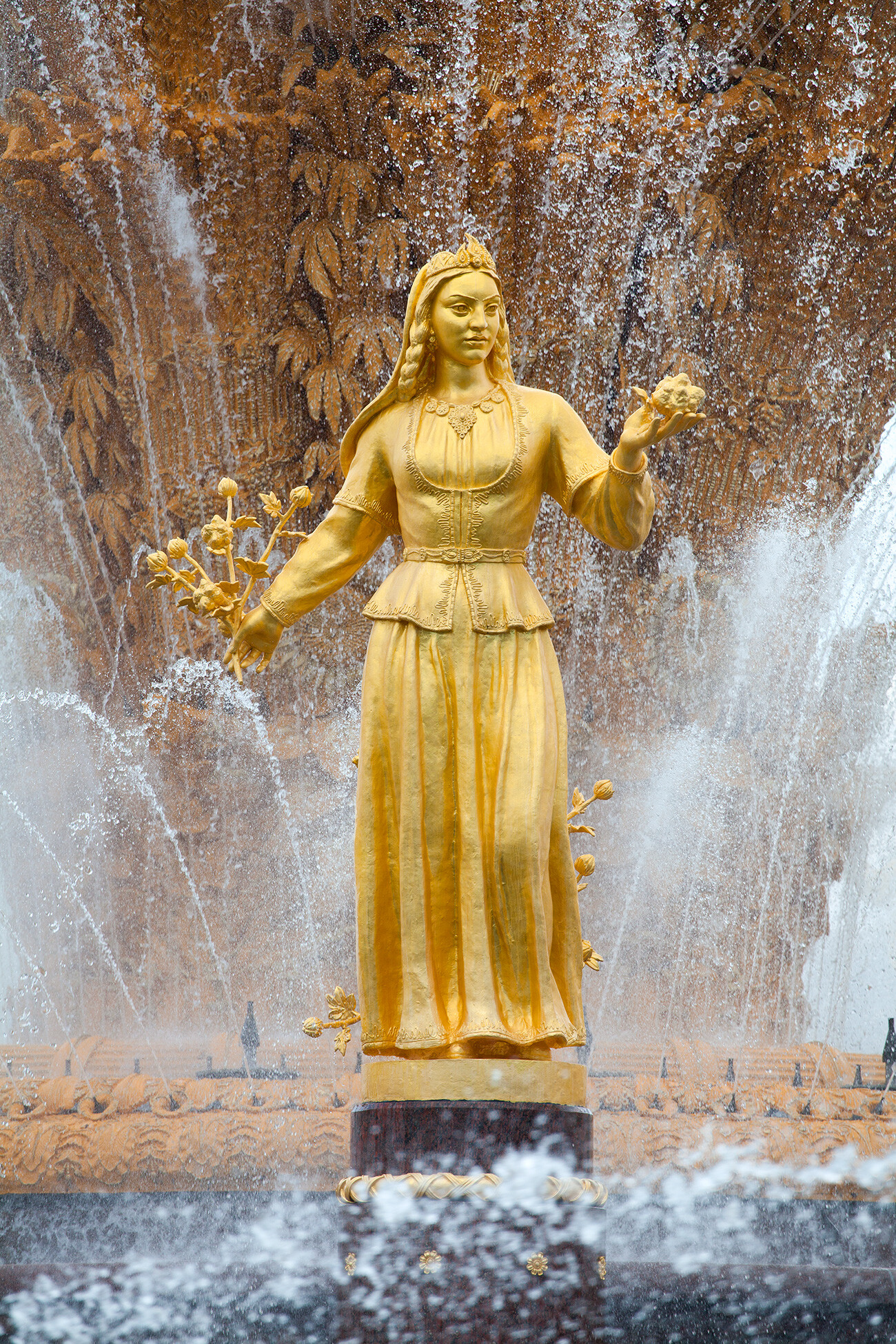
This woman is also holding a cotton flower.
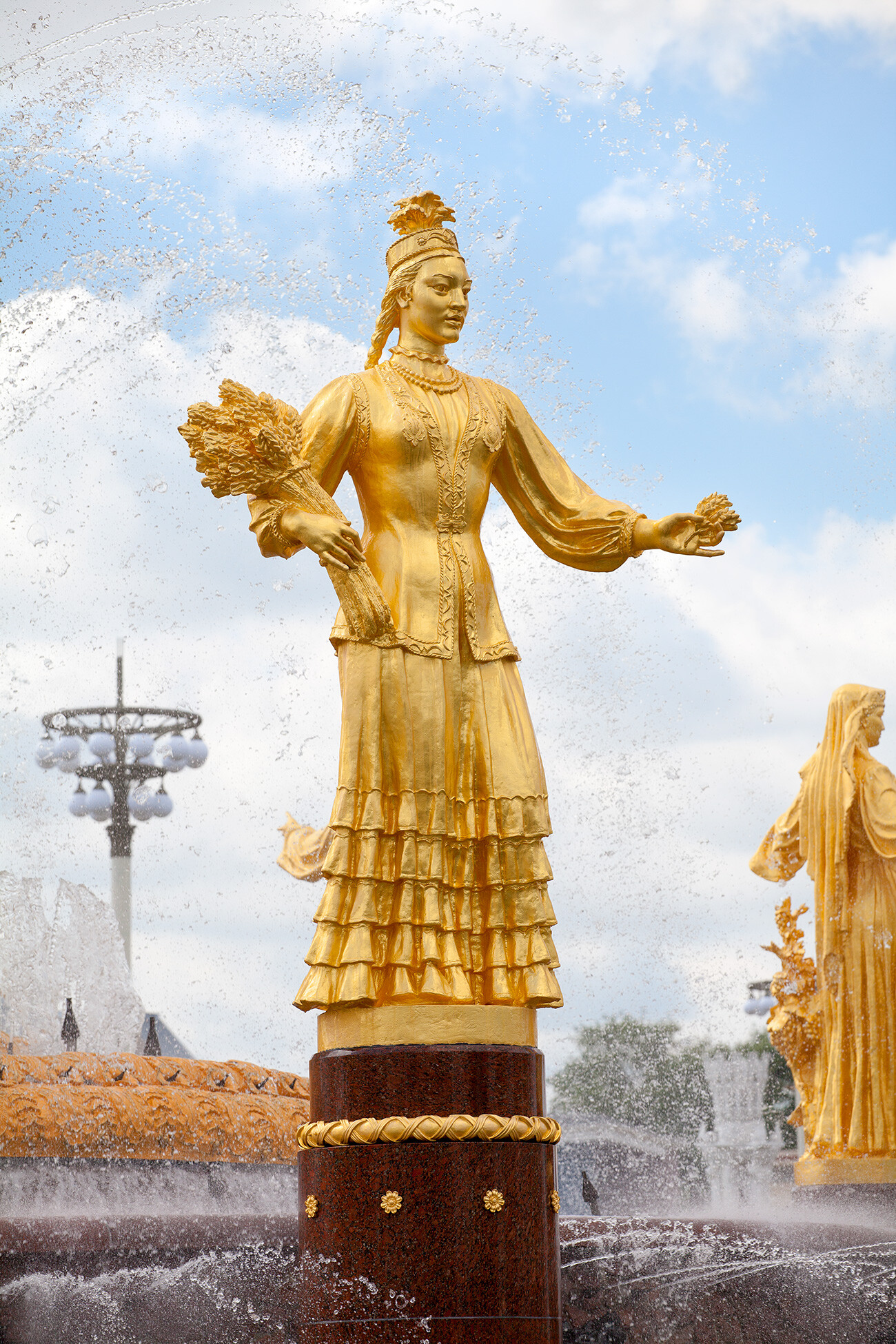
A sheaf of wheat is embraced by the authentic Kazakh beauty.
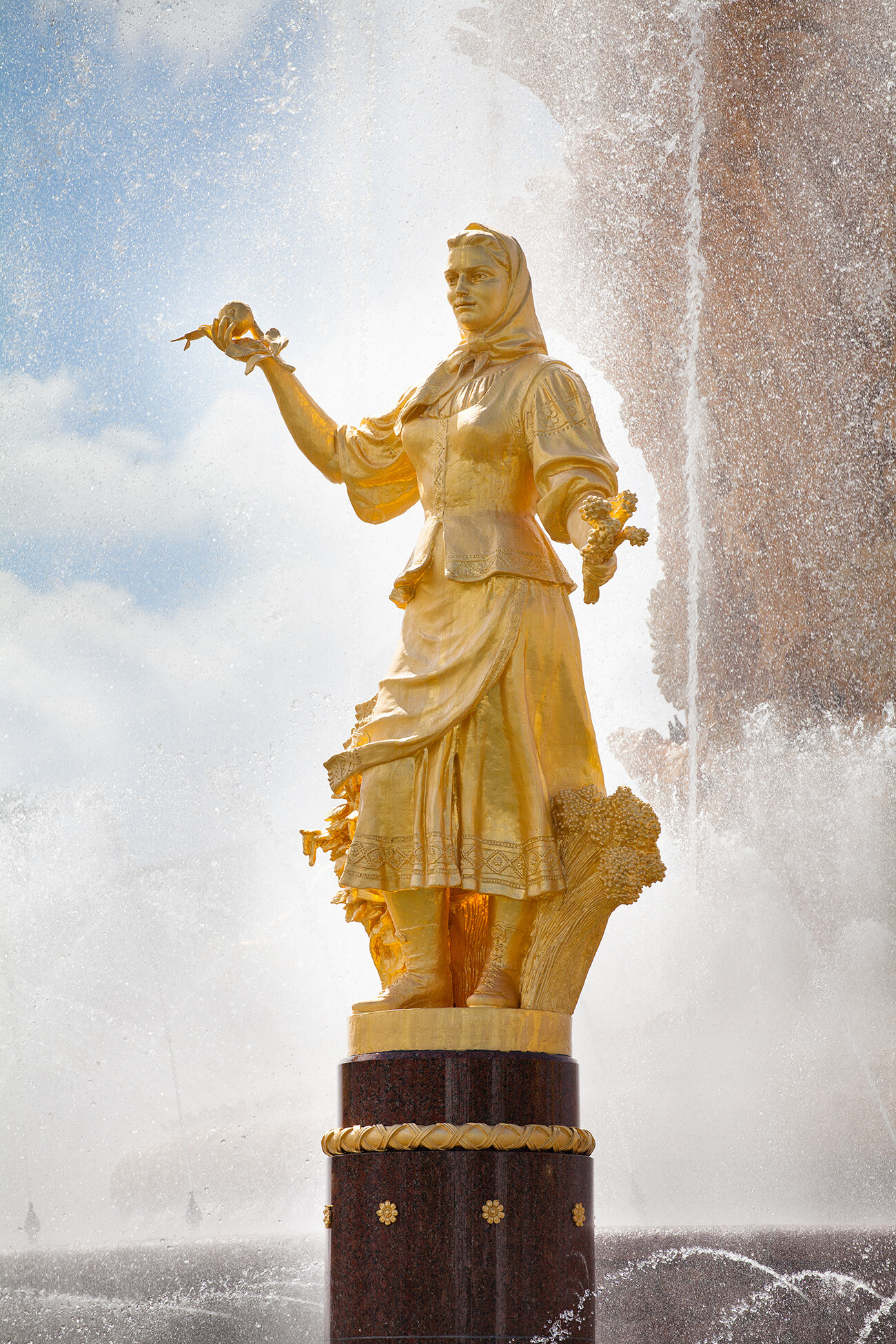
The cute Belyorussian woman with a shawl tied on her head is holding flax and an apple, not potatoes, contrary to stereotypes.
Dear readers,
Our website and social media accounts are under threat of being restricted or banned, due to the current circumstances. So, to keep up with our latest content, simply do the following:
If using any of Russia Beyond's content, partly or in full, always provide an active hyperlink to the original material.
Subscribe
to our newsletter!
Get the week's best stories straight to your inbox